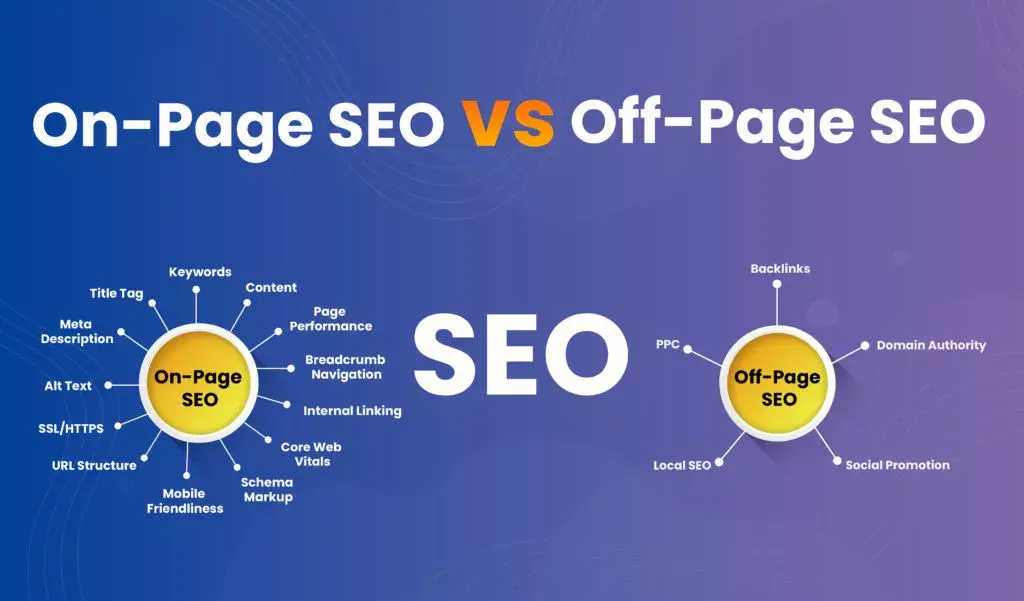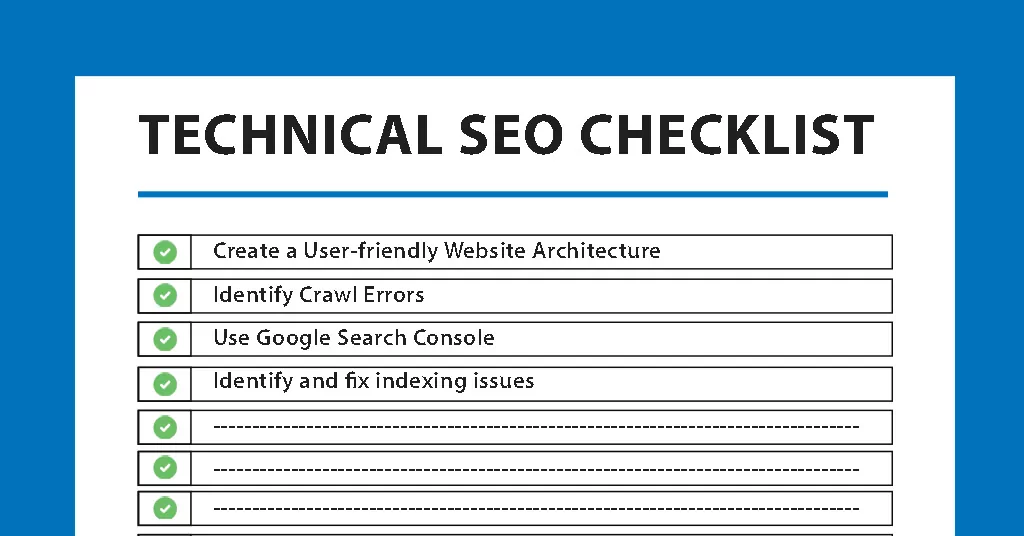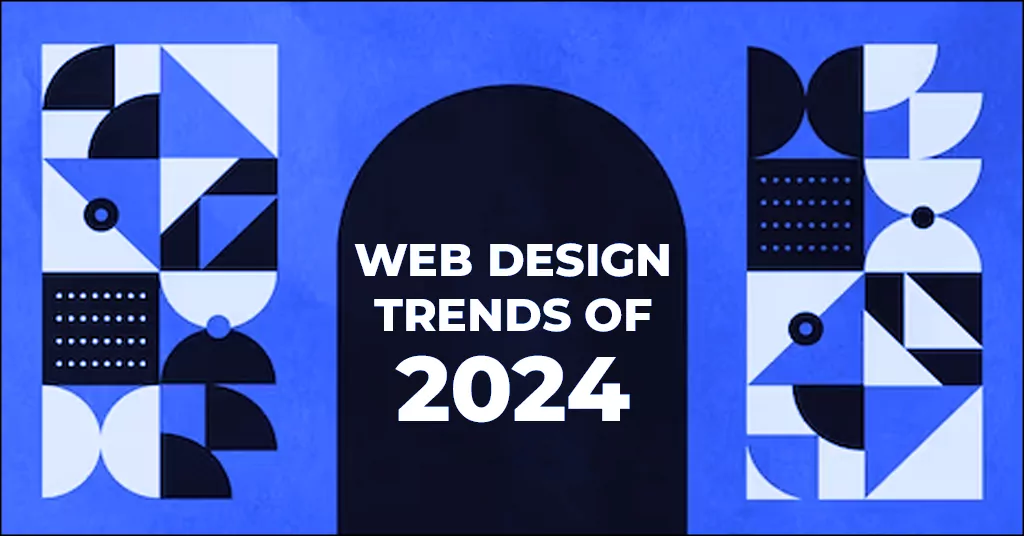Constructing Success: How to Optimize Your Construction Company's Web Design
Table of contents

Welcome to our powerhouse blog on construction company web design! In this ultimate guide, we will unleash the key strategies and steps to help you unlock the potential of your business’s online presence. Get ready to transform your website into a digital masterpiece, solidifying your success in the ever-evolving construction industry. Let’s dive in and optimize your web design for maximum impact and growth!
Why Website Matters for Construction Companies
Attention construction companies! Are you tired of missing out on potential clients and falling behind your competitors? It’s time to take control of your online presence and make your mark in the digital age. Don’t underestimate the power of a well-crafted website – it’s not just a virtual storefront, but a powerful tool to showcase your expertise, attract leads, and grow your business. According to Web Design Jacksonville here’s why having a top-notch website matters now more than ever:
- First Impressions Count: Your website is often the first point of contact for potential clients. Just like a well-maintained construction site leaves a lasting impression, a professionally designed website demonstrates credibility, expertise, and attention to detail. It’s your chance to make a strong impression and stand out from the crowd.
- Show off Your Projects: A website gives you the perfect platform to showcase your portfolio. With stunning visuals, detailed project descriptions, and testimonials from satisfied clients, you can establish trust and prove your worth. Showcasing your past successes will convince potential clients that you’re the right company for their upcoming projects.
- Boost Your Visibility: In today’s digital world, a strong online presence is vital. A well-optimized website helps you rank higher in search engine results, making it easier for potential clients to find you. By incorporating relevant keywords and implementing effective SEO strategies, you can significantly increase your visibility and attract more targeted traffic.
- Engage and Educate: Your website is a medium to engage and educate your audience. Utilize blog posts, case studies, and informative content to provide valuable insights, answer common questions, and position yourself as an industry expert. By sharing useful information, you not only build trust but also establish yourself as a valuable resource in the construction industry.
- Generate Leads: A strategically designed website acts as a lead generation machine. With well-placed call-to-action buttons, contact forms, and interactive features, you can capture valuable leads and convert visitors into projects. Providing visitors with an easy way to get in touch increases your chances of converting them into paying clients.
- Build Customer Relationships: Your website provides an opportunity to build long-term relationships with your clients. Through newsletters, email campaigns, and personalized content, you can stay in touch with past clients and nurture new leads. By maintaining regular communication, you’ll become the go-to construction company for their future needs.
Don’t let your competition steal the spotlight – invest in a remarkable website that reflects the unique selling points of your construction company. With a professional and engaging online presence, you’ll attract more clients, establish credibility, and enjoy long-term success. So, why wait? Get started on creating your irresistible website today!
Leveraging Your Brand: Crafting the Perfect Look and Feel

In the highly competitive construction industry, having a visually appealing and user-friendly website is crucial in establishing a strong online presence. A well-crafted look and feel for your website can help you differentiate your brand, attract potential customers, and ultimately drive more organic traffic to your site. Here are some strategies to optimize your construction website’s look and feel:
- Reflect Your Brand Identity: Your website should align with your company’s brand identity, including your logo, color scheme, and overall style. Consistency across all touchpoints creates a cohesive and memorable brand image.
- Use High-Quality Imagery: Showcase your past projects with high-resolution images that accurately represent your expertise and craftsmanship. Professionally captured photos and videos can significantly enhance the visual impact of your website.
- Develop a Responsive Design: With the growing use of mobile devices, it’s crucial to ensure your website is mobile-friendly and responsive. Optimize the layout, font sizes, and navigation for seamless viewing across different devices and screen sizes.
- Streamline Navigation: Make it easy for visitors to navigate your website by organizing your content logically and using intuitive menus and dropdowns. Incorporate a search bar for quick access to specific information.
- Incorporate Strong Call-to-Actions (CTAs): Guide users toward desired actions on your website, such as requesting a quote, scheduling a consultation, or viewing your portfolio. Use concise and compelling CTAs to encourage visitors to take the next step.
- Optimize Load Time: Slow-loading websites can lead to high bounce rates. Optimize your site’s loading speed by compressing images, minifying code, and leveraging caching techniques. A faster website improves user experience and search engine rankings.
- Prioritize User Experience (UX): Ensure a seamless and enjoyable browsing experience for users. Keep the layout clean, the text legible, and the content well-organized. Implement easy-to-use contact forms and incorporate interactive elements to engage visitors.
- Incorporate Testimonials and Reviews: Highlight positive customer experiences and testimonials on your website to build trust and credibility. Include a dedicated page or section that showcases your happy clients’ feedback.
- Optimize Metadata: Improve your website’s visibility in search engine results by optimizing your metadata, including title tags, meta descriptions, and header tags. Incorporate relevant keywords to increase organic traffic.
- Build Relevant Backlinks: Earn backlinks from reputable industry websites to improve your website’s authority and relevance. Guest posting, influencer collaborations, and content promotion can help attract high-quality backlinks.
By implementing these strategies, you can create a visually appealing and user-friendly construction website that effectively showcases your brand and expertise. Remember to continuously analyze and optimize your website’s performance using data-driven insights to stay ahead of your competitors in the digital space.
Mobile First: Optimizing for Mobile Devices
In today’s digital landscape, optimizing your construction website for mobile devices is no longer optional – it’s imperative. Mobile browsing has surpassed desktop usage, making it crucial to prioritize mobile-first design and user experience. Here are some key strategies to optimize your construction website for mobile:
- Responsive Design: Implement a responsive design that automatically adjusts the layout and content based on the user’s device screen size. This ensures that your website looks and functions seamlessly across various devices, from smartphones to tablets.
- Simplify Navigation: Keep the navigation streamlined and user-friendly for mobile users. Use a clean and intuitive menu structure, incorporating dropdowns or collapsible menus to save space while maintaining easy access to important pages.
- Optimize Load Time: Mobile users have little patience for slow-loading websites. Optimize your website’s load time by compressing images, minimizing code, leveraging browser caching, and using content delivery networks (CDNs). Tools like Google PageSpeed Insights can help identify specific areas for improvement.
- Prioritize Key Information: Mobile users often have specific needs and less time to browse. Place crucial information, such as contact details, services offered, and project galleries, prominently and clearly visible on the mobile version of your website.
- Clear Call-to-Actions (CTAs): Mobile screens offer limited real estate, so make sure your CTAs are concise, easily clickable, and strategically placed. Use large and noticeable buttons for important actions like requesting a quote, scheduling a consultation, or calling your business directly.
- Optimize Forms for Mobile: If your website includes forms, ensure they are mobile-friendly. Use streamlined, easy-to-complete forms and minimize the number of fields to keep the user experience smooth. Consider implementing autofill functionality for convenience.
- Use Mobile-Friendly Typography: Adjust fonts and font sizes to ensure legibility on smaller screens. Avoid using tiny text that requires zooming in, as it can deter users from engaging with your content.
- Test across Multiple Devices and Browsers: Regularly test your website on different mobile devices and browsers to ensure consistent performance and optimal user experience. Pay attention to resolution, touch targets, and overall functionality.
- Optimize Local SEO: Most mobile searches have a local intent, so be sure to optimize your website for local SEO. Include location-specific keywords in your content, meta tags, and headings. Also, leverage Google My Business to improve your visibility in local search results.
- Monitor Analytics and User Behavior: Utilize tools like Google Analytics to monitor user behavior, identify any pain points, and make informed optimization decisions. Pay attention to metrics like bounce rate, time on site, and conversion rates to gauge the effectiveness of your mobile optimization efforts.
By prioritizing mobile-first optimization, you’ll enhance user experience, increase engagement, and better cater to the growing number of mobile users in the construction industry. Regularly evaluate and refine your mobile strategy to stay ahead of the curve and ensure your website remains user-friendly and competitive in the mobile landscape.
Customization is Key: Making Your Site Unique

In the competitive construction industry, making your website stand out and showcase your unique offerings is crucial for attracting potential clients. Customization allows you to create a distinct brand identity and differentiate yourself from competitors. Here are some strategies to make your construction website unique:
- Develop a Unique Design: Invest in a custom website design that reflects your brand identity and sets you apart from generic templates used by competitors. Work with a skilled web designer who understands your vision and can create a visually appealing and unique layout.
- Tell Your Story: Incorporate a compelling “About” page that shares your company’s history, values, and mission. Highlight what sets you apart from competitors in terms of expertise, experience, and unique selling points.
- Showcase Your Portfolio: Display a portfolio of your past projects to demonstrate your expertise and the range of services you offer. Include detailed descriptions, high-quality images, and client testimonials to provide visitors with an in-depth understanding of your capabilities.
- Highlight Specializations: If you specialize in a particular area of construction, emphasize it on your website. Showcasing your expertise in specific sectors, such as residential, commercial, or industrial construction, helps you attract clients looking for specialized services.
- Incorporate Interactive Elements: Engage visitors by incorporating interactive elements on your website. This could include project galleries with before-and-after sliders, 3D virtual tours, or interactive maps showing the locations of completed projects. These elements not only make your website more visually appealing but also provide an immersive user experience.
- Offer Unique Resources: Provide valuable resources to your website visitors, such as construction guides, maintenance tips, informative blog posts, or industry insights. Sharing your expertise and knowledge demonstrates your authority and positions you as a go-to resource in the construction field.
- Incorporate Video Content: Use videos to showcase your projects, highlight testimonials from satisfied clients, or provide behind-the-scenes glimpses of your construction process. Video content can be more engaging and memorable, setting your website apart from those relying solely on static images and text.
- Personalize the User Experience: Customize the user experience by offering personalized features, such as a project estimation tool, interactive cost calculators, or a chatbot for instant customer support. Tailoring the experience to the individual user’s needs enhances engagement and makes your website more memorable.
- Emphasize Sustainable Practices: If your company prioritizes sustainability in construction, highlight your eco-friendly practices and certifications. Showcasing your commitment to sustainable building techniques and materials can attract environmentally conscious clients seeking sustainable construction solutions.
- Incorporate Social Proof: Display positive client reviews, ratings, or case studies on your website. Social proof strengthens your credibility and shows potential clients that you deliver on your promises. Include recognizable logos of past clients or industry affiliations to further enhance your reputation.
Remember, customization goes beyond simply visually differentiating your website. It’s about showcasing your unique qualities, expertise, and values to establish a strong and memorable brand identity. By implementing these strategies, you can create a construction website that sets you apart from the competition and attracts your target audience.
Content is King: Ensuring Quality Content on Every Page
When it comes to optimizing your construction website for search engines and attracting potential clients, quality content is essential. It not only helps improve your search engine visibility but also engages visitors and positions you as an industry expert. Here are some strategies to ensure high-quality content on every page of your construction website:
- Conduct Keyword Research: Identify relevant keywords that potential clients are searching for in relation to your construction services. Incorporate these keywords naturally into your content to improve your website’s search engine ranking and attract organic traffic.
- Create Useful and Informative Content: Develop content that addresses common questions, concerns, and challenges related to construction. Provide valuable information that helps visitors understand the construction process, materials, and other relevant topics. This positions you as a knowledgeable resource and builds trust with potential clients.
- Tailor Content for Your Target Audience: Consider your target audience’s demographics, preferences, and needs when creating content. Speak their language, address their pain points, and provide solutions that resonate with them. Personalizing the content helps establish a connection and encourages engagement.
- Optimize Readability: Write content that is easy to read and understand. Use clear headings, bullet points, and short paragraphs to break up the text. Avoid jargon or technical terms that may confuse or alienate visitors who are not familiar with the construction industry.
- Incorporate Visual Elements: Enhance the readability and engagement of your content by incorporating visual elements such as images, infographics, or videos. Visuals not only make the content visually appealing but also help convey complex information more effectively.
- Showcase Your Work: Highlight your past projects with compelling descriptions and high-quality images to demonstrate your expertise and capabilities. Use before-and-after images, testimonials, or case studies to showcase successful outcomes and build credibility.
- Highlight Your Unique Value Proposition: Clearly communicate what sets your construction services apart from competitors. Explain your unique approach, specialized skills, or innovative solutions that make you the ideal choice for potential clients.
- Maintain Consistency in Tone and Style: Establish a consistent tone and style across your website’s content. Whether it’s formal, casual, conversational, or authoritative, maintain consistency to create a cohesive brand voice and reinforce your brand identity.
- Include Calls-to-Action (CTAs): Encourage visitors to take the desired action by incorporating clear and prominent CTAs throughout your website. Whether it’s requesting a quote, contacting you for consultation, or signing up for a newsletter, make it easy for visitors to engage with your business.
- Regularly Update and Refresh Content: Keep your content up-to-date, relevant, and fresh. Regularly assess your existing content for accuracy and completeness, and make necessary updates. Additionally, create a content calendar to consistently produce new and valuable content that helps attract and retain visitors.
Remember, quality content not only appeals to search engines but also provides value to your website visitors. By having informative, engaging, and well-optimized content on every page of your construction website, you can effectively communicate your expertise, attract potential clients, and establish your brand as a trusted construction authority.
Simplicity is Best: Keeping Things Easy to Use and Navigate
Simplicity is the key to an effective construction company web design. When visitors come to your site, they want to easily find the information they need, without any confusion or frustration. By keeping things easy to use and navigate, you’ll provide them with a seamless experience that will leave a lasting impression. One way to achieve simplicity is by decluttering your web design. Avoid overcrowding your pages with unnecessary elements or information. Instead, focus on the most important content and make it easily accessible. Use concise headlines, clear sections, and intuitive navigation menus to guide visitors through your site with ease. Another aspect of simplicity is ensuring an intuitive user interface. When designing your construction company website, put yourself in the shoes of your target audience. Think about their needs and how they would want to interact with your site. Use clear and descriptive labels for buttons and links, and make sure they are easily clickable on both desktop and mobile devices. Additionally, don’t forget about the importance of loading speed. A slow-loading site can frustrate visitors and drive them away. Optimize your images, leverage browser caching, and utilize a content delivery network to speed up your site and provide a seamless browsing experience. In conclusion, simplicity is the key to success when it comes to construction company web design. By keeping things easy to use and navigate, you’ll create a positive user experience that reflects well on your brand and helps drive conversions. Remember, simplicity is powerful, so embrace it in your web design efforts and watch your construction company thrive online.
‘Don’t Forget SEO’: Improving Visibility Through Search Engines

Improving visibility through search engines is a crucial aspect of optimizing your construction company’s web design. While creating a visually appealing website is important, it is equally significant to ensure that your target audience can easily find it through search engine results. In today’s digital age, search engine optimization (SEO) plays a vital role in increasing organic traffic and converting potential leads. To enhance your website’s search engine visibility, focus on incorporating relevant keywords and phrases throughout your content, metadata, and URLs. By conducting thorough keyword research specific to your construction company, you can identify popular terms that your target audience is searching for. Including these keywords strategically in your website’s content will improve its chances of appearing higher in search engine rankings. In addition to keywords, optimizing your website’s structure and navigation is equally important. Ensure that your website is user-friendly and easy to navigate, allowing visitors to find the information they need quickly. This will not only enhance the user experience but also improve your site’s search engine rankings. Another aspect of SEO to consider is link building. Backlinks from other reputable websites can significantly impact your search engine visibility. Actively seek opportunities to collaborate with industry influencers, engage in guest blogging, or get mentioned in relevant online publications to increase the number of quality backlinks leading to your construction company’s website. By prioritizing SEO in your web design strategy, you can improve your construction company’s online visibility, reach a wider audience, and ultimately increase business opportunities. Don’t underestimate the power of effective search engine optimization in boosting the success of your website and overall business growth.
Security Above All Else: Protecting Your Site from Hackers
In today’s world, where every business is moving towards digital platforms, it is crucial for construction companies to prioritize website security. Your construction company’s web design serves as the face of your brand online, and hackers are always on the lookout for vulnerabilities they can exploit. So, it becomes imperative to protect your site from potential cyber threats. One of the first steps you can take to ensure website security is to choose a reliable web hosting provider that prioritizes safety. Look for hosting companies with strong security measures, such as regular backups, firewalls, and malware scanning. Additionally, keep your website’s software and plugins up to date, as outdated versions can serve as entry points for hackers. Another important aspect is implementing SSL (Secure Sockets Layer) encryption, which creates a secure connection between the user’s browser and your website. This encryption not only protects sensitive information exchanged between the user and your site but also helps improve your search engine rankings. Consider investing in a web application firewall (WAF) that can detect and block cyber threats in real time. These firewalls can protect your site from common attacks, such as SQL injections and cross-site scripting. Regularly monitoring your website for suspicious activity is also essential. Set up alerts for any potential breaches or unauthorized access and take immediate action if any anomalies are detected. By prioritizing website security, you are not only protecting your business but also gaining the trust of your customers. Remember, a secure construction company web design is a powerful tool for preventing potential cybersecurity risks and ensuring the success of your business online. Stay one step ahead of hackers and make security a top priority in your web design strategy.
In conclusion, optimizing your construction company’s web design is crucial for achieving success in today’s digital age. A well-designed website has the potential to showcase your expertise, attract more customers, and ultimately drive business growth. By following the strategies discussed in this article, you can ensure that your website stands out from the competition and appeals to your target audience. First and foremost, it’s important to understand why a website matters for construction companies. It serves as a virtual storefront, allowing potential clients to learn about your services, view your portfolio, and make informed decisions. Creating a visually appealing website that leverages your brand identity is key to crafting the perfect look and feel. A cohesive and professional design will instill confidence in visitors and increase the likelihood of engagement. Furthermore, optimizing your website for mobile devices is essential in today’s mobile-first world. A large number of users access the internet via smartphones and tablets, and a responsive and mobile-friendly website ensures that your content is easily accessible to all users. Customization is another vital aspect of web design, as it allows you to make your site unique and tailor it to your specific needs. Quality content is king when it comes to engaging visitors and attracting search engine visibility. By providing valuable and informative content on every page, you establish your construction company as an industry leader. Simplicity is also key in web design, as an easy-to-use and navigate website ensures a positive user experience. Lastly, don’t forget the importance of search engine optimization (SEO) and site security. Implementing SEO strategies will improve your website’s visibility in search engine results, driving more organic traffic. In addition, implementing robust security measures protects your site from hackers and instills trust in your visitors. In the end, optimizing your construction company’s web design is a powerful way to set yourself apart from the competition and achieve success in the digital realm. By prioritizing a visually appealing design, mobile optimization, customization, quality content, simplicity, SEO, and security, you can create a website that not only attracts potential clients but also drives business growth. Take the necessary steps to optimize your web design today and watch as your construction company thrives in the digital landscape.
In today’s digital age, having a website is no longer an option but a necessity for construction companies. As we’ve explored in this blog post, crafting the perfect look and feel for your brand, optimizing for mobile devices, and making your site unique through customization is essential for success. Quality content and easy navigation are crucial for engaging users while improving visibility through search engines and prioritizing security to ensure your site is protected and seen by potential clients. By optimizing your construction company’s web design, you are setting yourself up for success in a competitive market. So why wait? Take the first step towards digital transformation and watch your business thrive. Explore our other blog posts for more valuable insights and tips on harnessing the power of construction company web design. Your journey to success starts here.







